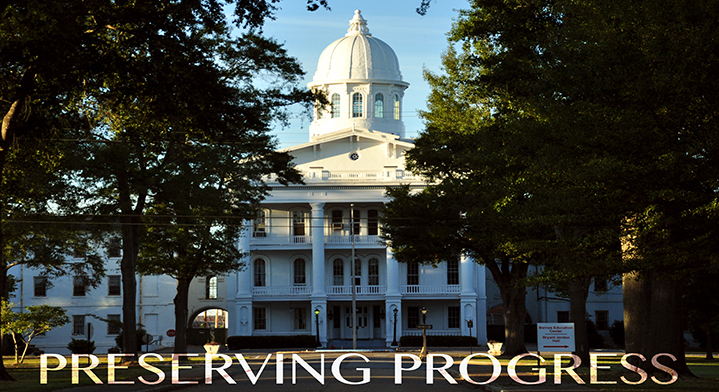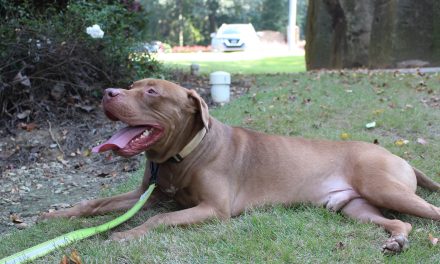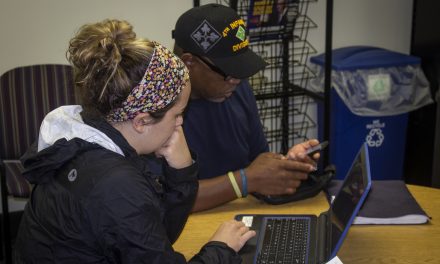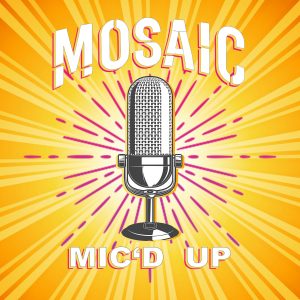Looming over Campus Drive East, the Bryce Hospital building is a familiar fixture of the Tuscaloosa skyline. This domed complex, sitting center-stage on a 168-acre swath of land on the eastern edge of The University of Alabama campus, appears to be straight out of the antebellum South with tall columns, sweeping lawns, and a tree-lined driveway that deposits visitors at the building’s front steps.

Bryant-Jordan Hall houses the Office of Student Media which is now located on some of the newly-purchased Bryce property.
Once known as the oldest and largest mental health facility in the state, Bryce Hospital moved its operations across town in July, and its sprawling former campus is now a land in transition: The University finalized a $77 million purchase of the property in 2011, and the quiet land has become a bustling hub for construction. In fact, several University divisions recently moved into some of its buildings, including the Office of Student Media and Bryant-Jordan Hall, a vocal performance center for the departments of music and theatre and dance. University Planner Dan Wolfe believes this work on the campus will be constantly in motion as the University grows.
Bryce Hospital was founded in 1861 and named for its first superintendent, Dr. Peter Bryce. According to Wolfe, the hospital operated as a self-sufficient farm where patients came to stay on the campus and work the land, a practice that greatly improved their health. The former main facility was added to the National Register of Historic Places in 1977 and housed up to 268 patients until this past July, when the final occupants relocated to the hospital’s new location, a 268,000 square-foot facility on University Boulevard.

Bryce Hospital dates back to 1949, and now the University is about to take this historic property over.
Along with the main building, a house on the right side of the driveway was the former home of the hospital superintendent, according to Bryce Hospital Historical Preservation Committee member Betty Shirley. The building, Shirley said, also hosted several events over the years, often introducing people to Bryce for the first time.
Shirley, a longtime Tuscaloosa resident who was a patient at Bryce for three months in 1968 while undergoing treatment for depression, was a member of the board formed by the mental health board to oversee the sale of the property. Alongside descendants of Peter Bryce and former hospital superintendent W.D. Partlow, Shirley said she was a vocal supporter of the University’s purchasing the land.
“I wanted the University to buy it because we didn’t have anywhere else to go, really,” Shirley said. “Everyone sort of wanted the University to buy the property, so they did.”
As the main building undergoes renovations and the superintendent’s house remains vacant, several other University divisions, including the Office of Environmental Health and Safety and the 100-bed Mary Starke Harper Geriatric Psychiatry Center, operate in satellite buildings off the property’s winding network of roads. Just around the corner from the main building, however, lies the Tom Barnes Education Center, which currently houses several programs through the College of Education geared towards students with special needs.

The Barnes Center.
Two programs housed in the Barnes Center are especially aimed at reaching out into the University and Tuscaloosa communities. One program, CrossingPoints, is a collaboration between the College of Education’s Special Education and Multiple Abilities department and the Tuscaloosa City and County Schools to provide transition services for students aged 18 to 21 with disabilities. The building also hosts the Multiple Abilities Program, a two-year program in the College of Education whose students graduate with dual certification to teach elementary and collaborative special education from kindergarten through sixth grade.
While they work to help and reach out to the community, both CrossingPoints and the Multiple Abilities Program still face a different challenge: the community’s image of the Bryce property, which until its recent vacancy, was previously guarded by fences and closed to public access. While agreeing that the new location is a step in the right direction, the people behind these programs are fully aware of the challenges their programs will face.
“Our students fight a losing battle all the time, in trying to make people see their ability over their disability,” said Amy Williamson, a classroom teacher at CrossingPoints. “I don’t like the idea of putting them in a place where they have to fight that much harder for people to realize the ability they have.”
Wolfe said the Bryce property’s image has not as much to do with its distance from the rest of campus, but rather with how it has been viewed in the past.

The Old Bryce doors and shut for people’s safety.
“I think our challenge is how we make Bryce feel more like the University of Alabama, and not like a mental hospital,” Wolfe said. “I think we have to be careful, and make sure we do that properly.
CrossingPoints, founded in fall 2002, teaches students about employment training, independent living, and the social and fundamental skills needed in their lives after college. Despite a low rate of employment for individuals with disabilities, Williamson said the high employment rate among CrossingPoints graduates – between 60 and 65 percent – embodies the organization’s goals.
“It gives them purpose and meaning in life,” Williamson said. “Then they can be contributing members of society, and all those things that make you feel good, and make you one of everybody else rather than someone that’s different.”

Many people and organizations will gain space to grow from the addition of the Bryce campus.
Williamson and Olivia Robinson, another classroom teacher at CrossingPoints, agreed that while the program’s former location in Garland Hall was more convenient to the rest of campus, the new location in the Barnes Center has its benefits, including a full kitchen and a new CrimsonRide route to transport students to the Transit Hub.
Robinson said that as the University expands, it has been able to successfully accommodate and support the program.
“We have job sites all over campus, and still we get students to those job sites,” Robinson said. “I think a lot of that has to do with all the community support CrossingPoints gets from the University and everyone at their job sites.”
Shirley also maintains a personal connection to CrossingPoints through her grandson Walt, a graduate of the program who has Down Syndrome and recently celebrated his 10th year working at the University’s on-campus bookstore.
“He benefitted so much from this program,” Shirley said. “We really love having Walt. He teaches us the importance of life.”
Davis has been a member of the Multiple Abilities Program since the start of her junior year. The program, she said, puts educational theory and philosophy into immediate practice, as participants interact with local students during activities that include after-school programs, one-on-one tutoring, and summer programs, as well as thirty weeks in which participants, under supervision, take the reins as teachers.
“My experience with MAP has been overwhelmingly positive,” Davis said. “The cycle of learning, acting, and reflecting makes each experience better than the last.”

A MAP student diligently takes an exam.
While its current occupants, including the Barnes Center, are there to stay, more changes are coming to the Bryce property. The University’s 20-year master plan calls for a new welcome center and performance spaces for the theatre and dance departments to occupy the main building, with a separate 2,000-seat classroom building also in the works. Plans include the construction of several connecting roads, linking the center of the Bryce campus to Jack Warner Parkway and Hackberry Lane, as well as an extension of 2nd Avenue from its current terminus at 4th Street to the campus. A bike operation center is planned for a yet-to-be-renovated satellite building, while extra parking and landscaping will also be included.
“Bryce Hospital revolutionized mental health in the United States, and became a model,” Wolfe said. “It really has a great, special history, and I think telling that’ll be fun.”






